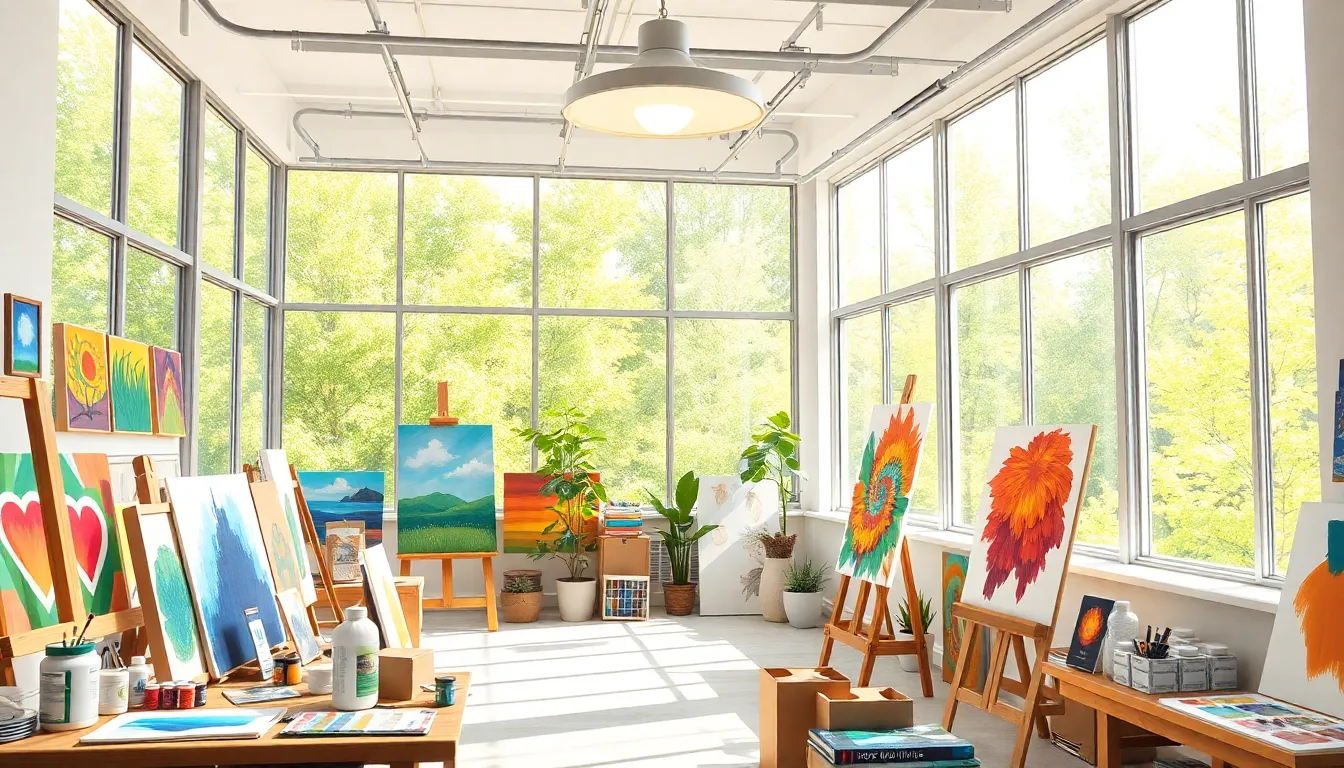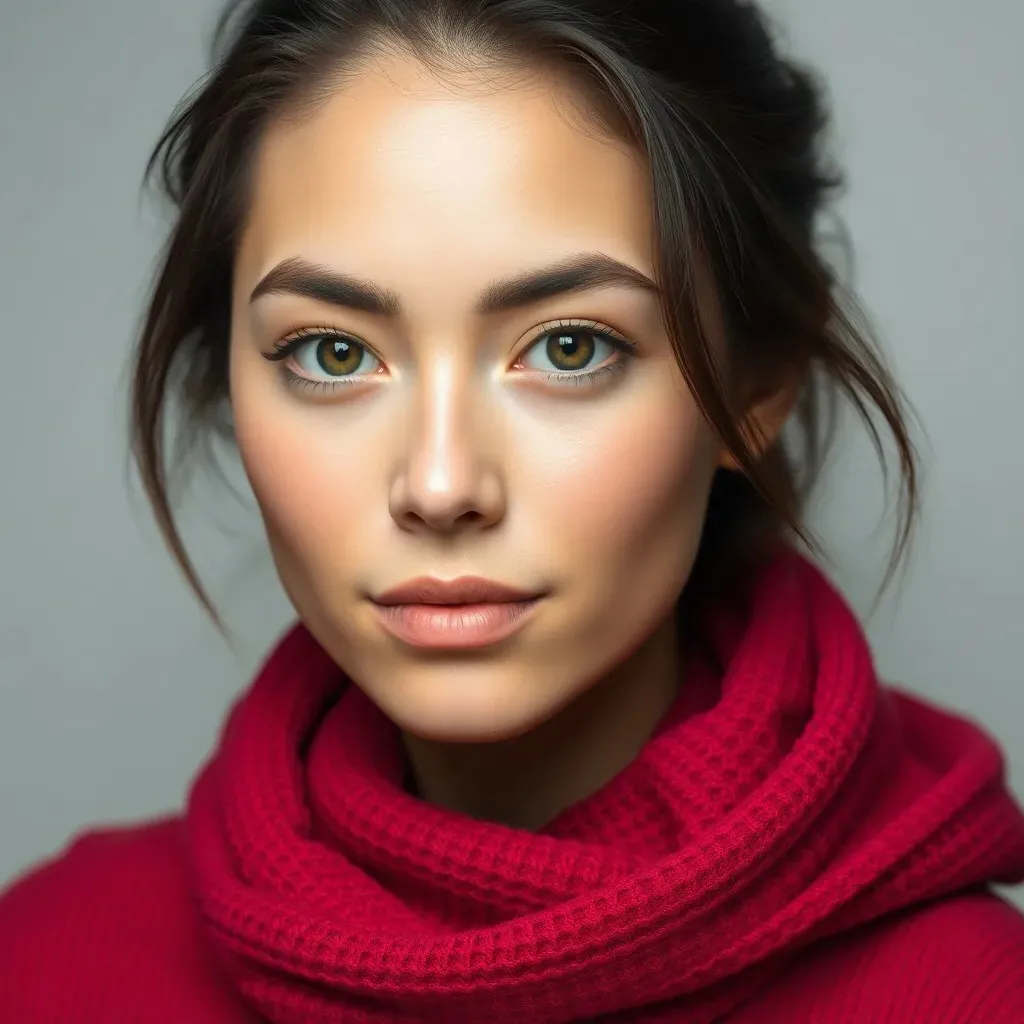In the vibrant world of art, lighting can make or break a masterpiece. Imagine pouring your heart into a canvas only for it to look like a sad potato under harsh fluorescent lights. Not exactly the vibe one hopes for, right? Proper art studio lighting isn’t just a luxury; it’s an essential ingredient for creativity.
Whether you’re capturing the subtle hues of a sunset or the bold strokes of an abstract piece, the right lighting can elevate your work from “meh” to “wow!” With various options available—from soft diffused lights to dramatic spotlights—artists can create the perfect atmosphere to inspire their best work. So, let’s dive into the illuminating world of art studio lighting and discover how to transform that dim corner into a radiant haven for creativity.
Table of Contents
ToggleImportance Of Art Studio Lighting
Art studio lighting plays a vital role in the artistic process. Proper illumination not only enhances creativity but also improves the visibility of artwork, allowing artists to showcase their talents effectively.
Enhancing Creativity
Good lighting fosters an environment conducive to creativity. Natural light serves as an excellent source, often inspiring artists as it changes throughout the day. Soft diffused lights encourage experimentation, creating a relaxed atmosphere where ideas flourish. Adjustable lighting solutions enable artists to fine-tune their environment based on their mood and desired artistic outcome. Vibrant colors in art can shift dramatically under various light sources, prompting artists to explore new techniques and styles.
Improving Artwork Visibility
Effective lighting improves the visibility of artwork, ensuring every detail shines. Spotlights can highlight specific areas, adding depth and dimension to pieces. Ceiling fixtures, like track lighting, offer flexibility, allowing artists to adjust angles as needed. Properly lit artwork enhances textures, bringing out intricate details that may go unnoticed in inadequate lighting. This attention to visibility aids both artists and viewers, enriching the overall experience. By focusing on lighting, artists present their work in the best possible way.
Types Of Art Studio Lighting

Proper lighting choices create the right atmosphere in an art studio. Understanding the different types of studio lighting helps artists optimize their creative spaces.
Natural Lighting
Natural light serves as an inspiring element. Daylight brings warmth and enhances color accuracy, allowing artists to see their work in true form. Large windows maximize sunlight, while adjustable blinds control brightness levels. Overcast days provide soft, even lighting, ideal for detailed tasks. Using natural elements fosters a connection between the artwork and the surrounding environment, inspiring creativity.
Artificial Lighting
Artificial lighting complements natural sources effectively. Different types of fixtures, like LED panels and fluorescent bulbs, offer brightness and range. Warm white light creates a cozy atmosphere, while daylight bulbs enhance color accuracy. Task lights focus directly on work areas, ensuring every detail is visible. Dimming options allow artists to adjust lighting according to their mood and project needs. Track lighting provides flexibility with adjustable angles, highlighting specific artworks or areas in the studio.
Key Considerations For Art Studio Lighting
Effective art studio lighting hinges on several critical factors. Understanding these considerations shapes a well-lit environment that enhances the artistic process.
Color Temperature
Color temperature affects how artwork appears under different lights. Warm lighting, around 2700K to 3000K, creates a cozy atmosphere, often preferred for painting. In contrast, cooler temperatures, reaching 5000K to 6500K, enhance color accuracy and detail visibility. Selecting the right color temperature ensures faithful representation of hues, particularly in detailed projects. Using daylight bulbs or adjustable LED options allows artists to customize their workspace lighting, adapting to specific tasks. Balanced lighting across various color temperatures contributes to an inviting yet functional studio.
Light Placement
Light placement plays a vital role in illuminating artwork without causing glare. Overhead fixtures should distribute light evenly across the studio. Positioning lights at angles reduces shadows, enhancing the visibility of intricate details. Task lights should focus on specific work areas, ensuring adequate illumination for painting or drawing tasks. Incorporating adjustable fixtures offers flexibility, allowing artists to modify lighting based on their preferences. Utilizing natural light through large windows further improves visibility, providing a dynamic lighting source that varies throughout the day. Prioritizing light placement ultimately enhances the artistic experience, supporting creativity.
Techniques For Optimal Lighting
Crafting the ideal lighting setup in an art studio involves several techniques. Artists can enhance their environment by focusing on the effective use of light sources.
Layering Light Sources
Utilizing multiple light sources creates depth and dimension in a studio. Ambient lighting establishes an overall glow, while task lighting focuses on specific areas where artists work. Accent lighting draws attention to important pieces or details of artwork. Combining warm and cool lights enriches the color palette and improves visibility. It’s essential to adjust the brightness and positioning of these layers for optimal results. The interplay between different sources can create a dynamic atmosphere that reflects the artist’s vision.
Using Reflectors
Incorporating reflectors into studio lighting can greatly enhance illumination. Placing reflectors strategically increases light distribution, eliminating shadows and softening harsh glare. Artists can use materials like white foam boards or specialized reflectors to manipulate the flow of light. Adjusting the angle of reflectors directs light toward the artwork, spotlighting certain features that need emphasis. This technique not only improves clarity but also adds a professional quality to the work environment, ensuring that every brushstroke is visible and well represented.
Art studio lighting plays a pivotal role in shaping an artist’s creative environment. By carefully selecting and positioning light sources, artists can significantly enhance the visibility and impact of their work. The right combination of natural and artificial lighting fosters inspiration while allowing for precise color representation.
Implementing various lighting techniques not only elevates the artistic process but also transforms the studio into a dynamic space. Whether it’s through soft diffused lights or focused spotlights, effective lighting solutions lead to a more engaging experience for both the artist and the audience. Investing time and thought into studio lighting ultimately pays off in the quality of the artwork produced.




